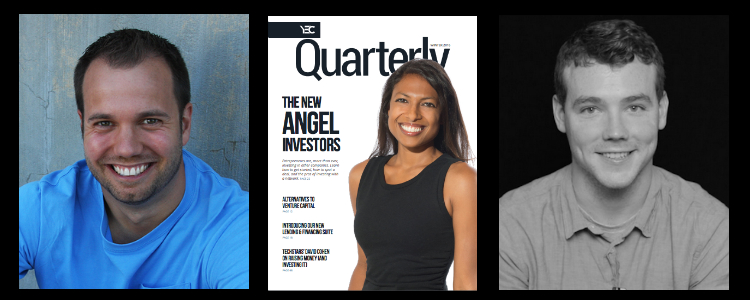
By YEC | Quarterly, Business Growth
YEC Members on How a Well-Executed Brand Can Help You Attract the Right Investors
In 2015, professor Shai Bernstein of Stanford Graduate School of Business, Arthur Korteweg of USC’s Marshall School of Business and AngelList’s Kevin Laws designed a randomized experiment in an effort to decode which factors early-stage investors care about the most when evaluating a potential investment.
To do so, they sent multiple variations of the site’s featured startup emails (a regular AngelList feature) about real startups to 5,000 of the site’s investors; the variations highlighted different aspects of the startup in question — its founding team, traction, and/or existing investors -- to see which category actually drove interested investors to learn more about the company.
The outcome seems to support a startup myth nearly every founder has heard: investors put team first, even before other investors or traction. In fact, the most experienced investors responded only to information about the founding team. That’s not to say that other aspects don’t factor into their decision-making process, but does suggest that company leadership is what ultimately helps early-stage investors narrow the field.
Investors from Mark Suster to Paul Graham, Brad Feld and Mark Cuban have all emphasized how highly they value the leadership behind their potential investments. Of Airbnb -- the idea for which the Y Combinator team found unbelievable at first — Paul Graham once wrote, “We funded them because we liked the founders so much.”
Most founders already know they need a brilliant team to get a foot in the door. But even if you have a great team, the secondary question Bernstein’s experiment raises is this: how do you improve the odds that your ideal investors find out about it?
How To Get Past the Screening Process
Patrick Ambron and his co-founder Pete Kistler, the YEC’ers whose reputation management company BrandYourself has raised $5 million to date, are no strangers to impressing investors -- or to the work that goes into increasing a founder’s visibility online.
“If you look at any investor, VC or angel, the one thing they all have in common is more than anything else, they invest in teams,” says Ambron. “The most important differentiator of whether a company’s going to be successful with VCs is, do we have the right team to execute, are they experts at what they say?”
Put simply, investors are going to Google you. Your track record on sites from AngelList to Crunchbase to your press page on your company site are all factors that make an impression -- or not.
 YEC member Patrick Ambron, co-founder & CEO of BrandYourself
YEC member Patrick Ambron, co-founder & CEO of BrandYourself
Out of a pool of interesting and high-quality startups relevant to an investor’s portfolio, they’re only going to dive deeper into a small portion. Of that portion, they’ll invest in but a tiny fraction. Why leave it to chance that your digital footprint (or lack thereof) might be one of the many possible red flags that hurts your chances?
Ambron says, “There are a million reasons for someone to say no. You need every kind of thing that’s going to help you. You get an introduction and they think the concept's interesting; they're going to start Googling you and your team. What's your background? What successes have you had in the past? Where did you work? Do you have anything that shows you're an expert either in the field you're in or leading a team or developing products?”
While you can’t invent the kind of experience that’s going to sway an investor, you can actively monitor your personal brand (and your executive team members’ brands) as they appear online to ensure they demonstrate that your team is well-equipped to succeed.
Luckily, neither negative results nor absent results are necessarily a dealbreaker if you address them before you start fundraising in earnest. The key is to invest early and often in the activities and web properties that will help you get past the earliest and most common litmus test: the Google search.
“Everyone should have a personal website. Everyone should be on social media. All of those should be branded around what it is you do. You should use those to showcase past work, past accolades, past recommendations, et cetera. You should be writing posts often about the field or the industry. You should make sure you're linking them all together,” says Ambron. “Everything should really center around the problem you’re trying to solve. Why has your experience led you to solving this problem?”
Many of the most critical steps for establishing a stronger personal brand online are easy and relatively quick. Ambron suggests using these steps as a guide:
- Make sure you've bought your domain name already, variation of it.
- Have (or update) your personal website.
- Develop 10 to 15 properties associated with your name (e.g. personal website, LinkedIn, Twitter, and other types of profiles relevant to you or your industry).
- Post related content regularly, whether through YEC Q&As and articles or your own properties, and repurpose/share them in multiple formats.
 YEC member Pete Kistler, co-founder & head of product at BrandYourself
YEC member Pete Kistler, co-founder & head of product at BrandYourself
If you fall into the danger zone -- either with negative results, or too few -- the complimentary YEC member benefit offered by BrandYourself can help. After you activate your benefit, a branding expert will work with you on several key steps: diagnosing how you currently look online and identifying both high-risk and high-reward properties; developing a plan for optimizing your presence, including which properties you should have but don’t so you can ultimately gain control of that first page; DIY software to monitor your first page over time; and the creation of one high-quality web property. You can learn more at yec.co.
Your Ace in the Hole: The Familiarity Factor
Of course, crafting a personal brand -- both by ensuring your presence is well-maintained and creating content regularly -- doesn’t, itself, ensure you’ll succeed in raising capital. But consistent branding efforts do increase the likelihood something (a meeting, a positive conversation) will happen.
John Hall, founder and CEO of award-winning content marketing agency Influence & Co., has made it his business to help leaders and executives develop and execute content marketing strategies. He says, “You can occasionally create the opportunity where you meet someone or you're introduced, but what building up the brands of the key employees and founders does is it creates a familiarity factor where when investors look at you, there’s less of that trust barrier. When you build up your brand they feel closer to you. There's a human-to-human connection that an investor can feel with leadership.”
But when Hall first started pounding the pavement at conferences and industry events shortly after starting his business, he found himself in the unenviable position of lacking exactly that.
“When we started this company, I felt like I was the last person picked in dodgeball. We were from Columbia, Missouri, trying to do things in media,” says Hall, chuckling. “I don’t want to feel like the varsity football star, but what I do want is to remove barriers so that it gives me opportunities to have a conversation, for someone to listen and see if there’s a good fit, and that’s what brand-building really does: It lowers trust barriers, not just for you but also so you can create more opportunities for the company.”
 YEC member John Hall, founder and CEO of Influence & Co.
YEC member John Hall, founder and CEO of Influence & Co.
Developing a well-executed content marketing strategy can also generate inbound interest. Every time you create content about your area of expertise, you’re in effect becoming their point person on the matter.
Explains Hall, “Most investors won’t know about your area like you do...As you [create content], you help educate them. If someone is going to put their money somewhere and they are learning about it through you, there’s this natural connection. It’s a huge competitive advantage.”
Hall’s team at Influence & Co. have created an editorial offering for YEC managers that helps streamline the process of content creation. But simply contributing a few Q&A responses and articles each quarter is a good way to build on whatever thought leadership content you may already be developing on other platforms.
Start With the Foundation and Build From There
The biggest takeaway that Ambron and Hall emphasize the importance of consistency and discipline.
“A lot of people overwhelm themselves thinking it’s going to be a bigger undertaking than it is. Once you build that foundation, you can get a lot of legs out of a little bit of work,” Ambron says. “Let’s say you take a little bit of time every month to write some sort of article or thought piece about your industry or what it is you work on. You post that up on your blog. You can go post that on Twitter and your social profile. You can quickly turn that into a quick slide deck to put on Slideshare you can put any questions on Quora. A little bit of work every month, done smartly, goes a long, long way.
If you're just getting started, Ambron has some final words of encouragement: “Fundraising is a long, difficult process. Investors are asking for strong teams and there’s just no reason not to get every advantage you can by making sure that when they look you up online, which they will do, it represents you are the right person for the job.”
This feature originally appeared in YEC Quarterly, a print magazine for YEC members. YEC Quarterly is no longer producing new issues.

